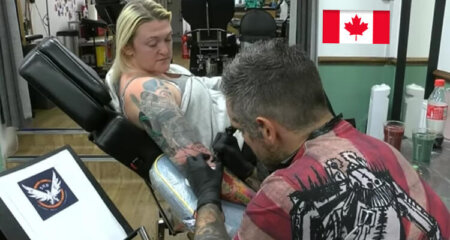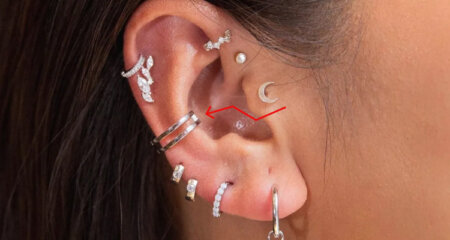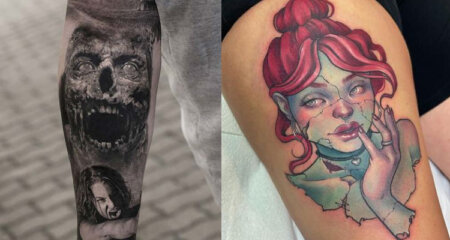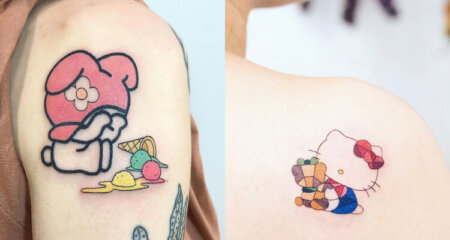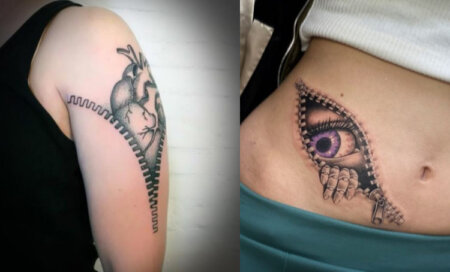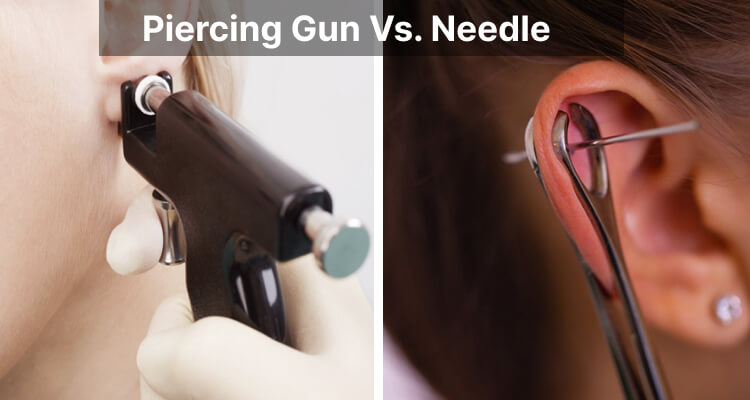
Piercing Gun vs Needle Making the Right Choice
Posted on
Welcome to the captivating world of body piercings! In this blog, we’ll embark on a journey to unravel the age-old debate between Piercing Gun vs Needle. Let’s face it – choosing the proper method for your piercing can be both thrilling and nerve-wracking.
But fear not! Our goal is to guide you with a warm and informed touch, shedding light on the advantages and disadvantages of each technique. Your safety and comfort are our top priorities, and knowledge is the key to empowering decisions. So, get ready to discover the ins and outs of piercing guns and needles as we embark on this fascinating exploration together!
What is a piercing gun?
A piercing gun is a handheld device commonly used in some piercing studios to insert jewelry through the skin quickly. It’s designed to resemble a weapon, making the process seem straightforward. However, despite its popularity, the piercing gun has sparked debates among experts due to its potential risks.
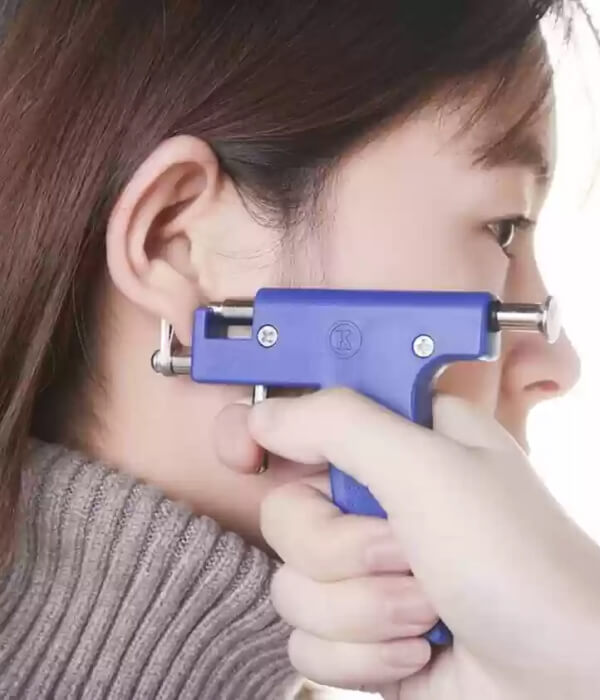
When the trigger is pulled, the stud or earring forcefully punctures the skin, possibly causing more trauma than using needles. While some may find it less painful, it’s crucial to understand the associated hazards and carefully consider alternative options for a safer and more enjoyable piercing experience.
Pros of using a piercing gun
- Speed and convenience: The piercing gun is designed for efficiency, making the process quicker, which is ideal for those who prefer a swift experience.
- Minimal pain perception: Some individuals may report experiencing less pain with a piercing gun, as the process is swift and the sensation might be milder than a needle piercing.
- Familiarity for some clients: For individuals with previous positive experiences with piercing guns, sticking with what they know can offer comfort and reassurance.
- Widely available: Piercing guns are often found in shopping malls and jewelry stores, making them easily accessible for spontaneous piercing decisions.
- Suitable for specific earlobe piercings: The piercing gun is commonly used for standard earlobe piercings, where the risk of complications is relatively lower. Nevertheless, it’s important to understand the restrictions and risks associated with this method.
Also See: Inking Tattoo Needles In 20,000fps Slow Motion On Transparent Skin
Cons of using a piercing gun
When it comes to piercing guns, evaluating the potential disadvantages that could affect your piercing experience is crucial. Here are some cons to be aware of
- Increased risk of tissue damage: Piercing guns work by forcefully pushing the jewelry through the skin, which can lead to excessive trauma and tissue damage. This can result in prolonged healing times and a growing threat of scarring.
- Potential for infection: Piercing guns are challenging to sterilize completely, increasing the risk of bacterial or viral infections. Cross-contamination may occur if proper sterilization protocols are not followed diligently.
- Unsuitability for certain piercings: Due to their limited versatility, piercing guns are unsuitable for all types of piercings, especially those in sensitive or unconventional areas. Attempting non-standard piercings with a gun can lead to severe complications.
Considering these cons, opting for safer and more precise methods like needle piercing is essential, ensuring a smoother and healthier journey toward your desired piercing. Always prioritize safety and consult a professional piercer for masterful guidance tailored to your requirements.
What is a piercing needle?
A piercing needle is a slender, hollow needle designed explicitly for body piercings. Unlike piercing guns, which forcefully push jewelry through the skin, piercing hands create a clean and precise opening by gently sliding through the tissue.
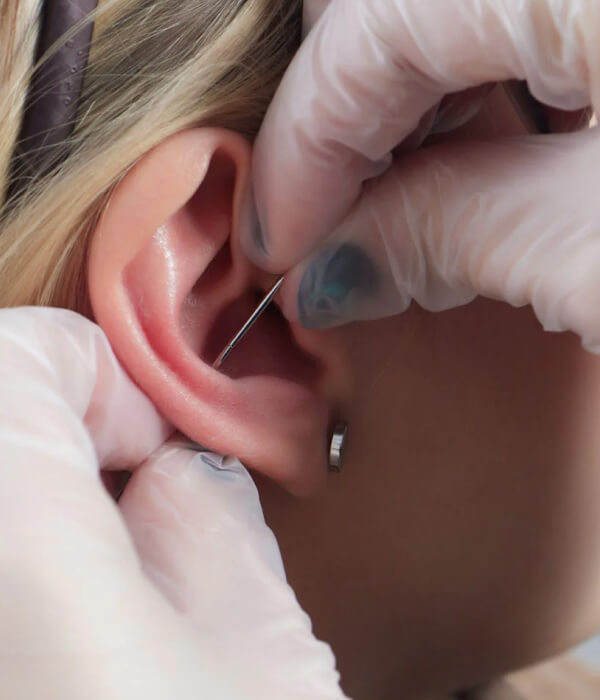
Professional piercers often prefer needles for their accuracy, allowing them to navigate around blood vessels and nerves, minimizing potential damage and discomfort. Additionally, the hollow design of the needle enables smooth jewelry insertion, promoting faster healing and reducing the risk of complications. With its focus on precision and safety, the piercing needle has become a trusted tool in body modification.
Pros of using a needle
The needle piercing process offers many advantages that set it apart from piercing guns. Here’s why many piercing enthusiasts and professionals prefer needles
- Precision and control: Unlike piercing guns, needles allow piercers to have fine-tuned control over the piercing process. They can accurately position the needles, ensuring the jewelry is inserted exactly where desired, resulting in a more aesthetically pleasing outcome.
- Lower risk of tissue trauma: Piercing needles gently create an opening without forcefully pushing through the tissue. This reduces the risk of unnecessary trauma to the surrounding area, promoting faster healing and potentially minimizing pain during and after the procedure.
- Suitable for a wide range of piercings: Needles offer versatility, making them ideal for various piercings, from ear cartilage and nostrils to belly buttons and more intricate body piercings. Their ability to navigate different anatomical structures makes them the preferred choice for more challenging and specialized placements.
With its focus on precision, safety, and adaptability, the needle piercing method has earned its place as a reliable and trusted technique among piercing enthusiasts and professionals.
Cons of using a needle
While needle piercing boasts numerous benefits, it’s essential to be aware of the potential drawbacks associated with this method
- Slightly more discomfort during the process: Compared to the quick and forceful nature of piercing guns, needle piercings might cause more pain during the procedure. However, many individuals find the brief discomfort well worth the precision and reduced tissue trauma that needles provide.
- Longer procedure time: Needle piercings typically take longer than piercing guns, which involves carefully creating an opening rather than swiftly pushing jewelry through. However, this extra time ensures meticulousness and accuracy, contributing to better healing outcomes and minimized risks.
Though these considerations exist, many piercing enthusiasts and professionals believe that the advantages of using a needle far outweigh these minor inconveniences, making it a preferred method for a safe and beautifully executed piercing experience.
Safety and Hygiene Considerations
Safety and hygiene are crucial in body piercings. Understanding the key considerations can make all the difference in your piercing experience
A. Sterilization practices for both methods: Reputable piercing studios adhere to strict sterilization protocols for piercing guns and needles. All equipment and jewelry must undergo thorough sterilization to prevent infections and complications.
B. Cross-contamination risks with piercing guns: Piercing guns have a higher risk of cross-contamination since they come into direct contact with the client’s skin. On the other hand, needles are single-use and disposed of after each procedure, significantly reducing the risk of spreading infections.
C. Importance of professional training: Proper training for piercers ensures safe and accurate piercings. Professional piercers undergo extensive education and practical experience to understand anatomy, sterilization procedures, and how to handle potential complications.
D. Recommendations for selecting a reputable piercing studio: Look for studios with a clean and organized environment, experienced and certified piercers, and transparent sterilization practices. Reading reviews and pursuing suggestions from trusted references can also assist you in finding a reputable and safe piercing studio that prioritizes your well-being. Remember, safety should always be the top priority when getting a piercing.
Pain and Healing Comparison
Pain and healing are crucial when deciding between piercing guns and needles. Let’s explore the differences
A. Pain perception with piercing guns vs. needles: Pain perception varies among individuals, but many report slightly more discomfort during needle piercings due to the gradual insertion process. Conversely, piercing guns might cause a quick, sharp sensation. However, it’s critical to cite that pain toleration differs from person to person, and both methods are generally manageable.
B. Healing time differences between the methods: Healing times depend on various factors, such as piercing location and aftercare. Generally, needle piercings tend to heal faster because they create cleaner punctures with less trauma to the tissue. With their potential for more tissue damage, piercing guns prolong healing.
C. Aftercare tips for each method: Proper aftercare is crucial for healing regardless of the technique. Cleanse piercings with saline solution, avoid touching with unclean hands, and follow your piercer’s instructions for optimal recovery.
Remember, pain and healing experiences can differ, so it’s essential to prioritize safety, choose a reputable piercer, and practice diligent aftercare to ensure a successful and comfortable piercing journey.
Aftercare in both styles
Aftercare plays a vital role in ensuring a successful and comfortable healing process, regardless of the piercing method chosen
For piercing guns:
- Keep the area clean and dry: Gently wash the piercing twice a day with a saline solution or mild soap, avoiding harsh products that could irritate the fresh piercing.
- Avoid touching the piercing: Refrain from touching the new piercing, as hands may carry bacteria that can lead to infections.
- Be cautious with jewelry: Opt for hypoallergenic jewelry and avoid changing it too soon, as it can disrupt the healing process.
For needles:
- Follow the same cleansing routine: Cleanse the piercing site twice daily with a saline solution or gentle soap to keep it bacteria-free.
- Be gentle with the piercing: Avoid moving or twisting the jewelry during healing, as it can cause irritation and delays in recovery.
- Don’t remove the starter jewelry too early: Wait until the piercing is completely healed before changing the jewelry to evade difficulties.
Remember, every person’s body is unique, so follow your piercer’s aftercare instructions and listen to your body’s cues. Your new piercing will thrive and become a beautiful addition to your style by providing proper care and attention.
Piercing Gun Vs. Needle: What’s Best?
Deciding to get a new piercing is exciting but can also lead to uncertainty about the best method: a piercing gun or a needle. Both piercing guns and needles have pros and cons, so it’s essential to weigh the factors before making a choice.
Piercing guns offer speed and convenience, making the process faster and seemingly less painful. However, piercing guns have a higher risk of tissue damage and potential for infection due to difficulties in sterilization.
On the other hand, needles provide precision and control, resulting in lower tissue trauma and reduced risk of complications. Needle piercings are also more versatile, suitable for a wide range of piercings beyond standard earlobes.
While some might perceive slightly more discomfort during needle piercings, the benefits in healing time and overall safety make them a preferred option for many professional piercers.
Always prioritize safety and consult with a reputable piercer to ensure the best choice for your unique piercing journey.
Comparison between piercing gun and needle
Comparing piercing guns and needles, several crucial factors come into play that can influence the piercing experience and overall satisfaction
1. Scar tissue formation: The forceful nature of piercing guns can lead to increased scar tissue around the piercing site over time. On the other hand, needle piercings, with their gentler approach, are less likely to cause excess scarring, resulting in a cleaner and more aesthetically pleasing appearance.
2. Jewelry options: Needle piercings offer many jewelry options, allowing individuals to express their unique styles and preferences. From various materials like titanium and gold to different sizes and styles, needle piercings provide greater flexibility to ensure a comfortable and customized fit.
3. Professional expertise: Professional piercers often advocate for needle piercings due to the specialized training and knowledge they require. Correctly performed needle piercings, guided by an understanding of anatomy, minimize the risk of errors and complications, promoting a safer and more successful piercing experience.
4. Suitability for sensitive areas: For sensitive areas like cartilage, nose, and genitals, needle piercings are the preferred method. Their gentle approach reduces unnecessary discomfort and risks, making them a better choice for delicate and intricate piercings.
5. Long-term health considerations: Opting for a method that prioritizes better healing and reduced tissue trauma positively impacts the long-term health and aesthetics of the piercing. Needle piercings’ precision and controlled technique contribute to a smoother healing process and lower future complications and risks.
By carefully evaluating these aspects, people can make a knowledgeable judgment, ensuring their piercing journey is safe and aligned with their personal preferences, lifestyle, and desired outcome.
In conclusion, comparing piercing guns and needles reveals distinct characteristics influencing the piercing experience. While piercing guns offer speed and perceived convenience, they have higher risks of tissue damage, infection, and scar tissue formation. On the other hand, needle piercings showcase precision, reduced trauma, and versatility, making them the preferred choice among professional piercers.
Ultimately, the decision of which method to choose depends on individual preferences, the piercing location, and the expertise of the piercer. Prioritizing safety, hygiene, and professional guidance ensures a successful and comfortable piercing journey. Remember, a well-informed choice, paired with diligent aftercare, leads to a beautifully adorned, confident, and happy you!


